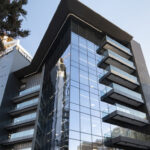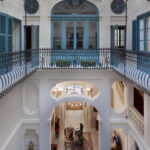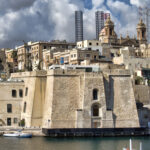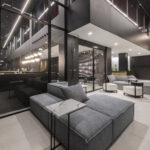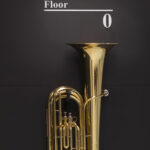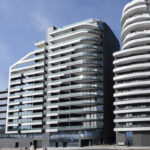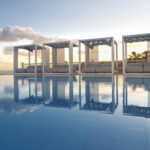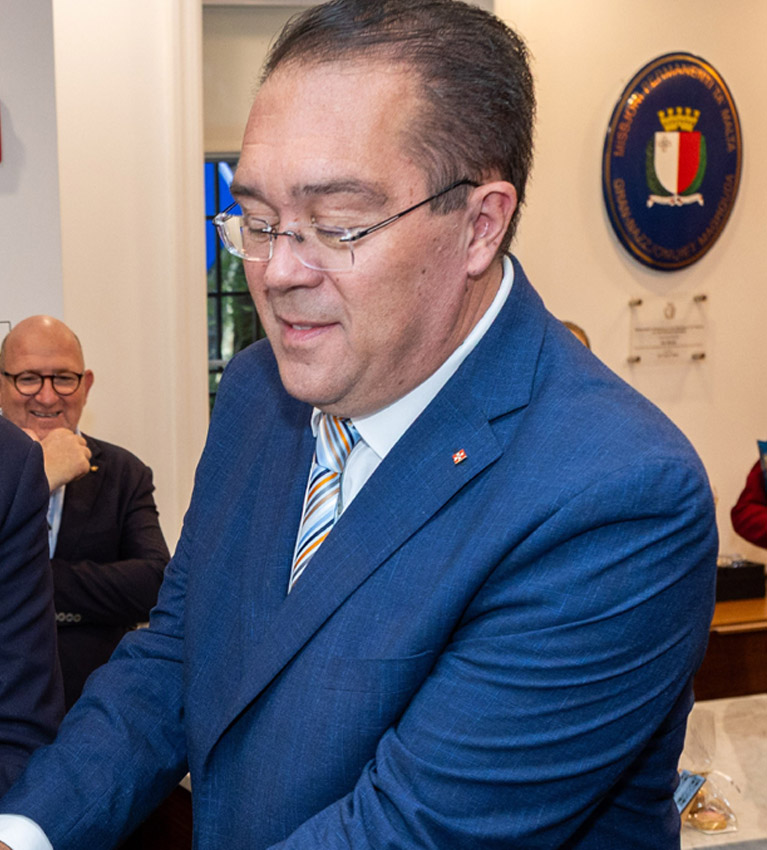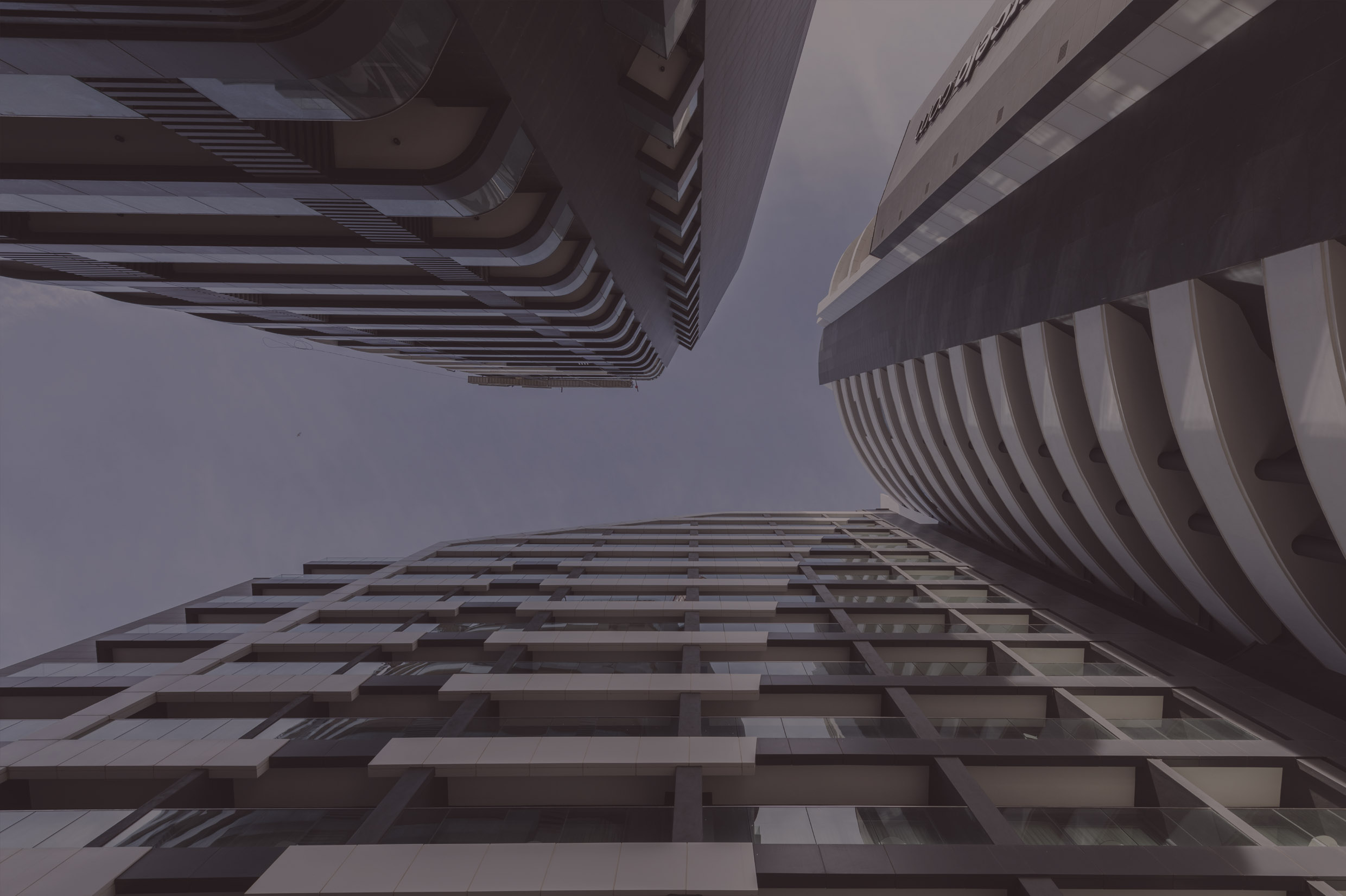
Shaping Timeless Hospitality Spaces: The Firm of Dr Edwin Mintoff Architects
December 27, 2024

A Commitment to Quality & Sustainability in Malta’s Hospitality Sector
December 24, 2024
Comsec: The Ideal Service Integrator for Your Business Success
December 27, 2024
The firm of Dr Edwin Mintoff Associates was set up over thirty years ago by Dr Edwin Mintoff, an architect and civil engineering who became one of the first Maltese architects to obtain a doctorate Ph.D. in the field of architecture and urban design.
Indeed, Dr Mintoff was awarded an Alumni Achievement Award 2021 from the University of Newcastle upon Tyne.
Since its inception in 1986, the firm has evolved from humble beginnings into one of Malta’s leading architectural and engineering practices. Today, it employs over forty architects, offering a diverse suite of services encompassing architectural and interior design, structural and civil engineering, urban design, environmental planning, project management, and cost consultancy.
Over the years, Dr Edwin Mintoff has been responsible through his firm for the development of a vast number of projects both in the Maltese Islands as well as overseas, that span a very wide range of building typologies and programs, including but not limited to urban interventions, residential developments, office buildings, touristic complexes, industrial buildings, commercial structures, educational facilities, health-care institutions, sports facilities, road upgrade and construction works.
Each project undertaken reflects a commitment to enhancing the built environment, ensuring that every intervention respects its context while advancing architectural dialogue. We approach all projects, regardless of scale, with the same importance, as architecture is a practice which truly leaves an impression on the surrounding environment.
Each project - whether past or present - represents a distinct chapter of exploration, creativity, and responsibility. Our firm’s ethos is founded on urban design principles - we look to design not just the buildings themselves but to consider the new spaces that are created between them.

Dr Edwin Mintoff
Favourite Projects Relating to Hospitality
Our firm has been fortunate enough to have been entrusted with so many different hospitality projects over the years. Of course, many of our most cherished past projects are those which involved historic buildings, such as the Domus Zamittello hotel in Valletta, for which we were awarded the Planning Authority Award for Conservation Architecture. Working on historic buildings allows us the opportunity to combine preservation with innovation.
The Domus Zamittello project, for example, was challenging not only in restoring and revitalising a historic palace, but in weaving modern functionality into a space brimming with centuries of character. The project demanded respect for the past while allowing contemporary design to shine subtly, harmonizing with the original architecture. Another example is of course the Cugó Gran Macina Hotel, whereby through the creation of the guesthouse and ancillary facilities within the existing structure, life was breathed back to the beautiful but at the time derelict building.
This project was in fact honoured with the European Prix Versailles UNESCO World Architecture & Design Award, a testament to its successful blending of heritage and modernity. The building’s new use was planned so as to cause least changes whilst simultaneously mirroring the original interior and exterior appearance. All modern interventions were designed so as to be visually distinguishable from the remaining original masonry, in particular to the reconstruction of the vault damaged in World War 2.
We are presently also engaged in the design and development of a range of commercial projects, including for example a distinguished new 5-star hotel being developed in Valletta, the Romégas Hotel. This project is particularly compelling due to the historical significance of the building, which features an original plaque dating back to 1577. The plaque confirms that the structure was originally commissioned for the celebrated and contentious figure, Mathurin d’Aux de Lescout, also known as Romégas.
The integration of this rich historical context into the hotel’s design presents a unique opportunity to honour the building’s storied past while crafting a contemporary luxury experience.
From heritage to modernity, the ‘Beefbar on the Beach’ in St. Paul’s Bay exemplifies our adaptive approach. Transforming a dilapidated structure into a vibrant, contemporary space, this project emphasizes framed views and contextual sensitivity. Our intervention uplifted the area, ushering in a new age which could suitably accommodate the internationally renowned ‘Beefbar’ franchise. The main design agent which informed our concept was the preservation and maximisation of specially framed views. This concept materialised into two seemingly floating planes which, together with offering shade, also provided view framing whilst also housing the functional aspects of the project.The massing of the design also effectively mediates the difference in level between the street and foreshore in a stepped manner.
This contextual approach meant that the bulk of massing of the restaurant is neatly tucked into the ridge edge, allowing for continuous views from the promenade above. Here, our design prioritizes seamless transitions - between indoor and outdoor spaces, between opulence and tranquillity. Recently, the Barceló Fortina Malta Hotel in Sliema allowed us to replace an existing, tired architecture with a new visually engaging design.
Our architectural design drew inspiration directly from the sea, resulting in a harmonious interplay of materials and forms that reflect the dynamic nature of the ocean. The deliberate juxtaposition of white cladding against a backdrop of black aluminium, ceramic tile and plaster creates a dramatic visual contrast, adding depth to the building. The playful mix of materials shape the public perception of the complex. We designed strategically positioned sail-like features, paying homage to the maritime environment and serving as focal points that infuse movement into the architecture.
The façade, designed homogenously yet incorporating asymmetry, has stepped terraces thus mitigating the visual impact of a tall structure and integrating it into the surroundings.
Our firm has been fortunate enough to have been entrusted with so many different hospitality projects over the years. Of course, many of our most cherished past projects are those which involved historic buildings, such as the Domus Zamittello hotel in Valletta, for which we were awarded the Planning Authority Award for Conservation Architecture. Working on historic buildings allows us the opportunity to combine preservation with innovation.
The Domus Zamittello project, for example, was challenging not only in restoring and revitalising a historic palace, but in weaving modern functionality into a space brimming with centuries of character. The project demanded respect for the past while allowing contemporary design to shine subtly, harmonizing with the original architecture. Another example is of course the Cugó Gran Macina Hotel, whereby through the creation of the guesthouse and ancillary facilities within the existing structure, life was breathed back to the beautiful but at the time derelict building.
This project was in fact honoured with the European Prix Versailles UNESCO World Architecture & Design Award, a testament to its successful blending of heritage and modernity. The building’s new use was planned so as to cause least changes whilst simultaneously mirroring the original interior and exterior appearance. All modern interventions were designed so as to be visually distinguishable from the remaining original masonry, in particular to the reconstruction of the vault damaged in World War 2.
We are presently also engaged in the design and development of a range of commercial projects, including for example a distinguished new 5-star hotel being developed in Valletta, the Romégas Hotel. This project is particularly compelling due to the historical significance of the building, which features an original plaque dating back to 1577. The plaque confirms that the structure was originally commissioned for the celebrated and contentious figure, Mathurin d’Aux de Lescout, also known as Romégas.
The integration of this rich historical context into the hotel’s design presents a unique opportunity to honour the building’s storied past while crafting a contemporary luxury experience.
From heritage to modernity, the ‘Beefbar on the Beach’ in St. Paul’s Bay exemplifies our adaptive approach. Transforming a dilapidated structure into a vibrant, contemporary space, this project emphasizes framed views and contextual sensitivity. Our intervention uplifted the area, ushering in a new age which could suitably accommodate the internationally renowned ‘Beefbar’ franchise. The main design agent which informed our concept was the preservation and maximisation of specially framed views. This concept materialised into two seemingly floating planes which, together with offering shade, also provided view framing whilst also housing the functional aspects of the project.The massing of the design also effectively mediates the difference in level between the street and foreshore in a stepped manner.
This contextual approach meant that the bulk of massing of the restaurant is neatly tucked into the ridge edge, allowing for continuous views from the promenade above. Here, our design prioritizes seamless transitions - between indoor and outdoor spaces, between opulence and tranquillity. Recently, the Barceló Fortina Malta Hotel in Sliema allowed us to replace an existing, tired architecture with a new visually engaging design.
Our architectural design drew inspiration directly from the sea, resulting in a harmonious interplay of materials and forms that reflect the dynamic nature of the ocean. The deliberate juxtaposition of white cladding against a backdrop of black aluminium, ceramic tile and plaster creates a dramatic visual contrast, adding depth to the building. The playful mix of materials shape the public perception of the complex. We designed strategically positioned sail-like features, paying homage to the maritime environment and serving as focal points that infuse movement into the architecture.
The façade, designed homogenously yet incorporating asymmetry, has stepped terraces thus mitigating the visual impact of a tall structure and integrating it into the surroundings.
EM’s Design Philosophy for Hospitality Projects
In our opinion, hospitality projects require a distinct lens. They are not just buildings; they are experiences. When our firm approaches such designs, we ask: What emotions should this space evoke? Comfort and luxury are givens, but a truly memorable hospitality space does more.
It becomes a vessel for culture, an escape into curated wonder, and an anchor for human connection. Each detail, from the texture of a wall to the orientation of a window, must contribute to a story that speaks to the guests, making their stay not just pleasant but profound.Hospitality design must showcase uniqueness and originality, it should be something which stands out.
This calls for architecture which entices the user to actually engage with the design. Hospitality architecture stands apart as a unique canvas—an opportunity to create not merely buildings, but experiences. From historic restorations to cutting-edge hotel designs, this field challenges us as architects to balance functionality, aesthetics, and cultural relevance.
Thus, when approaching the design of hospitality projects, we want to create a unique experience for anyone who enters the building, whether guest, restaurant patron or staff. For example, our design of the new Verdi hotel on the Gzira Promenade focused on research on the world-famous composer, Giuseppe Verdi, and thus our design concept evolved on themes of operatic drama and the vibrance experience evoked through theatre and music. This theme is evident throughout the entirety of the hotel, but in a subtle way.
The colour scheme chosen was a grayscale colour scheme to tie the guest back to the time period of Verdi around the mid-1800s when life was seen ‘in black and white’ but we introduced a red accent colour (linked to the opera theatre curtains and décor) together with brass (linked to the musical instruments). This colour scheme, that of a monochrome concept with soothing muted grey colours was also chosen to create a tranquil effect within the building suited on the busy Gzira Promenade, with playful accept colours included to provide a contrast. We also introduced a series of musical instruments within the lobby, reception and restaurant, including the Aida trumpet which Verdi himself designed. This project was the Commercial and Public Buildings Award Winner in 2022 at the MASP awards.
Sustainability is also at the forefront of our designprocess for all projects, but especially for those related to hospitality. In the above-mentioned Hotel Verdi project, for example, we introduced a ventilated façade system which provides a marble cladding that is seen externally, but also offers numerous benefits which are not visible to the eye but which include in particular increased thermal insulation and reduce energy usage.
What do you consider to be the main opportunities and challenges facing the Hospitality industry?
The hospitality industry is at an intriguing juncture, presenting opportunities as boundless as the challenges are complex. As architects, we are tasked with not only responding to evolving demands but also proactively shaping the future of this dynamic field. It is my opinion that sustainability should now be seen as a mandate, not a choice.
The growing focus on environmental stewardship is reshaping the way we approach hospitality projects. New technology, together with environmental measures already in place, allow us to create hotels that are sustainable as well as luxurious. Another issue Dr Edwin Mintoff feels is important is the maintaining the local identity when focusing on hospitality projects.
When looking at Malta as an example, the architectural legacy and culture is so rich that it is important that we fight against the risk of homogenization - where projects begin to look and feel the same, regardless of location. When looking at hospitality projects, we must always advocate for site-specific designs that celebrate the uniqueness of a place.
In our opinion, hospitality projects require a distinct lens. They are not just buildings; they are experiences. When our firm approaches such designs, we ask: What emotions should this space evoke? Comfort and luxury are givens, but a truly memorable hospitality space does more.
It becomes a vessel for culture, an escape into curated wonder, and an anchor for human connection. Each detail, from the texture of a wall to the orientation of a window, must contribute to a story that speaks to the guests, making their stay not just pleasant but profound.Hospitality design must showcase uniqueness and originality, it should be something which stands out.
This calls for architecture which entices the user to actually engage with the design. Hospitality architecture stands apart as a unique canvas—an opportunity to create not merely buildings, but experiences. From historic restorations to cutting-edge hotel designs, this field challenges us as architects to balance functionality, aesthetics, and cultural relevance.
Thus, when approaching the design of hospitality projects, we want to create a unique experience for anyone who enters the building, whether guest, restaurant patron or staff. For example, our design of the new Verdi hotel on the Gzira Promenade focused on research on the world-famous composer, Giuseppe Verdi, and thus our design concept evolved on themes of operatic drama and the vibrance experience evoked through theatre and music. This theme is evident throughout the entirety of the hotel, but in a subtle way.
The colour scheme chosen was a grayscale colour scheme to tie the guest back to the time period of Verdi around the mid-1800s when life was seen ‘in black and white’ but we introduced a red accent colour (linked to the opera theatre curtains and décor) together with brass (linked to the musical instruments). This colour scheme, that of a monochrome concept with soothing muted grey colours was also chosen to create a tranquil effect within the building suited on the busy Gzira Promenade, with playful accept colours included to provide a contrast. We also introduced a series of musical instruments within the lobby, reception and restaurant, including the Aida trumpet which Verdi himself designed. This project was the Commercial and Public Buildings Award Winner in 2022 at the MASP awards.
Sustainability is also at the forefront of our designprocess for all projects, but especially for those related to hospitality. In the above-mentioned Hotel Verdi project, for example, we introduced a ventilated façade system which provides a marble cladding that is seen externally, but also offers numerous benefits which are not visible to the eye but which include in particular increased thermal insulation and reduce energy usage.
What do you consider to be the main opportunities and challenges facing the Hospitality industry?
The hospitality industry is at an intriguing juncture, presenting opportunities as boundless as the challenges are complex. As architects, we are tasked with not only responding to evolving demands but also proactively shaping the future of this dynamic field. It is my opinion that sustainability should now be seen as a mandate, not a choice.
The growing focus on environmental stewardship is reshaping the way we approach hospitality projects. New technology, together with environmental measures already in place, allow us to create hotels that are sustainable as well as luxurious. Another issue Dr Edwin Mintoff feels is important is the maintaining the local identity when focusing on hospitality projects.
When looking at Malta as an example, the architectural legacy and culture is so rich that it is important that we fight against the risk of homogenization - where projects begin to look and feel the same, regardless of location. When looking at hospitality projects, we must always advocate for site-specific designs that celebrate the uniqueness of a place.

